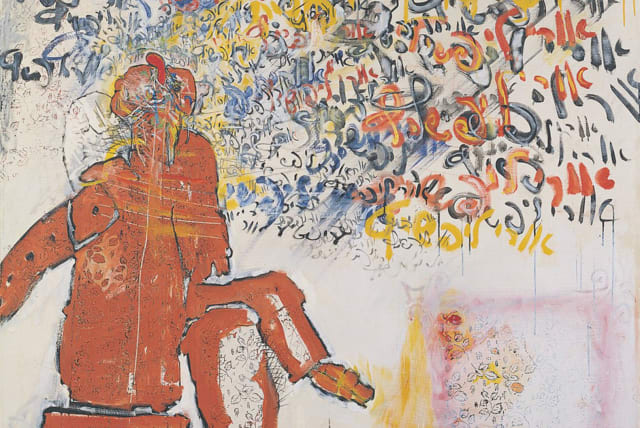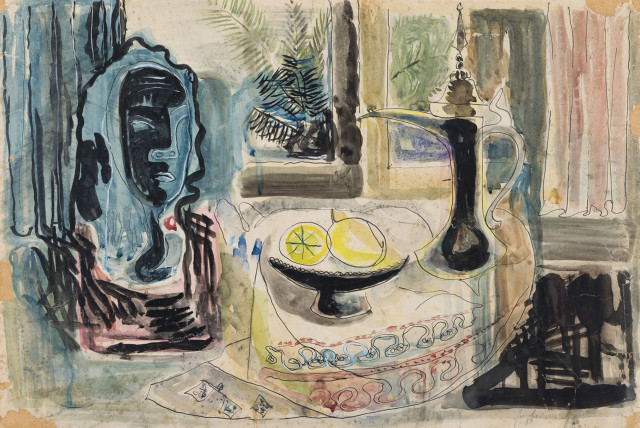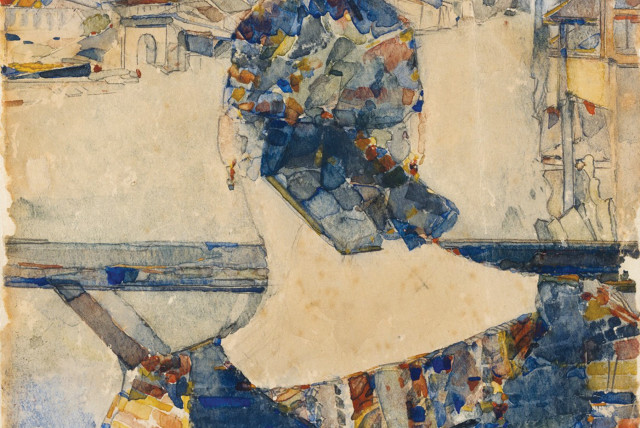Revisiting Israeli art at the Ramat Gan Museum

The Ramat Gan Museum of Israeli Art unveils a precious hoard of contemporary works.
If you’re looking to get a good general idea of Israeli art stretching back over a century, you could do a lot worse than pop along to the Ramat Gan Museum of Israeli Art.
On Monday, the museum unveiled a rich swath of works by fabled titans of the local arts field, including the likes of Reuven Rubin, sculptor Yitzhak Danziger, local modern art pioneer Joseph Zaritsky, Yehezkel Streichman, Arie Aroch and Yigal Tomarkin. It is difficult to attach the epithet “definitive” to any collection, but the assemblage provided courtesy of the Phoenix Insurance Group comes pretty close to overarching inclusion.
All told, there are over 200 works in the “Be’eretz Ahavati” (In the Land of My Love) exhibition, which is being displayed to the public for the first time in 17 years. The roll call of masters reads like a Who’s Who of Israeli art. In addition to the aforementioned, the expansive show features milestone creations by Menashe Kadishman, Micha Ullman, and Moshe Kupferman, of whom only 83-year-old Ullman is still alive, kicking, and creating. But there are also plenty of contributions by some of the younger crowd, with multidisciplinary artist Sigalit Landau, sculptor Tsibi Geva, 2023 Israel Prize plastic arts category recipient Michal Rovner, and photographers Adi Ness, David Adika, and Sharon Yaari all on the Phoenix roll call.
Dipping into such a vast stockpile of art and coming up with what would be generally accepted as a representative showing couldn’t have been easy.
“It wasn’t at all,” curator Roni Cohen-Binyamini admits.
If one considers the volume and quality of treasures sitting in the Phoenix vaults, that smacks of understatement. What to leave out? There is, for example, no room in the current exhibition for something by Dada pioneer Marcel Janco. And what about world renowned multidisciplinary artist Mordechai Ardon? Clearly, Cohen-Binyamini had to steel herself to make the clinical cut out of a total of 1,400 works in the collection started by Yosef Hachami, owner and CEO of Phoenix until 2002.
She may have had her work cut out for her, but the curator says it was a moving and exciting assignment to take on, to address such a hefty body of work and come up with a suitably expansive exhibition. “Yes, it was wonderful to compile such a broad-ranging show. It is an indescribably superlative [Phoenix] collection of Israeli art from the beginning of the 20th century – actually from the late 19th century – through to the 21st century. It was a great honor to curate it.”
No doubt, we will feel similarly honored, and captivated, by the exhibits currently on display in Ramat Gan.
Cohen-Binyamini says there was no room for nostalgia or being starry-eyed when she got down and dirty with the treasures from the Phoenix collection. “There are cornerstones of Israeli art there. So many iconic works. But the exhibition bottom line was always going to be more important than any individual item. The whole is more important than the individual parts.”
Making art accessible
It was not just about incorporating such invaluable junctures along the local art continuum, which came into the world during such a pivotal passage of time of this country, and of world Jewry in general. “I felt it was important to make this art accessible to people here. It was an amazing process.”
There is little in the way of documentary database intent to “Be’eretz Ahavati.” The exercise is more about conveying a sense of the local artistic zeitgeist, and offering a new perspective on what has come out of this part of the world to date, rather than waxing aesthetically about any particular standout work.
“Yes, I wanted to impart a fresh understanding of Israeli art,” Cohen-Binyamini notes. “I hope the exhibition shows Israeli art in a way that is relevant to today. It is fascinating to look at this DNA. We have here the DNA of a culture, an era, a society.”
That entails not just cherry-picking paintings and sculptures but also generating lines of communication between them, regardless of their historical slot – as befitting her curatorial expertise. “I allowed myself complete freedom in selecting and positioning the works. It was a delight to engage in that, in delving into our artistic genome,” she says.
Ramat Gan Museum Director-General Ran Guetta goes along with that mindset and thrills at the opportunity to unveil such important works in the Israeli cultural timeline. “We have special and amazing artists in Israel. The art collection brought to the museum a great gift. Over 200 works by the greatest Israeli artists. Insane power.”
Guetta says the pursuit is proving its worth in real ticket office terms. “So far, over 12,000 visitors have already booked to come to the exhibition, and many more will come.”
Ramat Gan Mayor Carmel Shama Hacohen joined in the superlative chorus.
“It is a great honor and privilege for the city of Ramat Gan to host an exhibition of this unique and talked-about weight,” he says, adding that a visit to the museum could also help to fuel some badly needed positive vibes. “At this time, the State of Israel is going through complex days, and here is an exhibition that can unite and give Israelis a few hours of unified and pure cultural Israeliness. I am proud that it will be displayed in this museum, where so many public resources have been invested.
“I see a great deal of public interest in the city, both in the age range and in a broad demographic range, and this is real news.”
The exhibit proprietors also noted the palliative benefits to be had from taking a peek at “Be’eretz Ahavati,” and said they want to spread the good word.
“The collection is not an asset of the Phoenix; it belongs to the entire public. The collection itself concentrates works from the beginning of Zionism to the present day, wonderful artists, wonderful creations,” says Phoenix Holdings CEO Eyal Ben Simon. “The collection describes 100 years of Israeli creativity. I am sure that the exhibition will reach the hearts of Israelis and do something for them inside, a wonderful tour of one art. Happy New Year.”
Admission to the exhibition up to October 14 is free. For more information: https://www.rgma.org.il
Jerusalem Post Store
`; document.getElementById("linkPremium").innerHTML = cont; var divWithLink = document.getElementById("premium-link"); if (divWithLink !== null && divWithLink !== 'undefined') { divWithLink.style.border = "solid 1px #cb0f3e"; divWithLink.style.textAlign = "center"; divWithLink.style.marginBottom = "15px"; divWithLink.style.marginTop = "15px"; divWithLink.style.width = "100%"; divWithLink.style.backgroundColor = "#122952"; divWithLink.style.color = "#ffffff"; divWithLink.style.lineHeight = "1.5"; } } (function (v, i) { });


